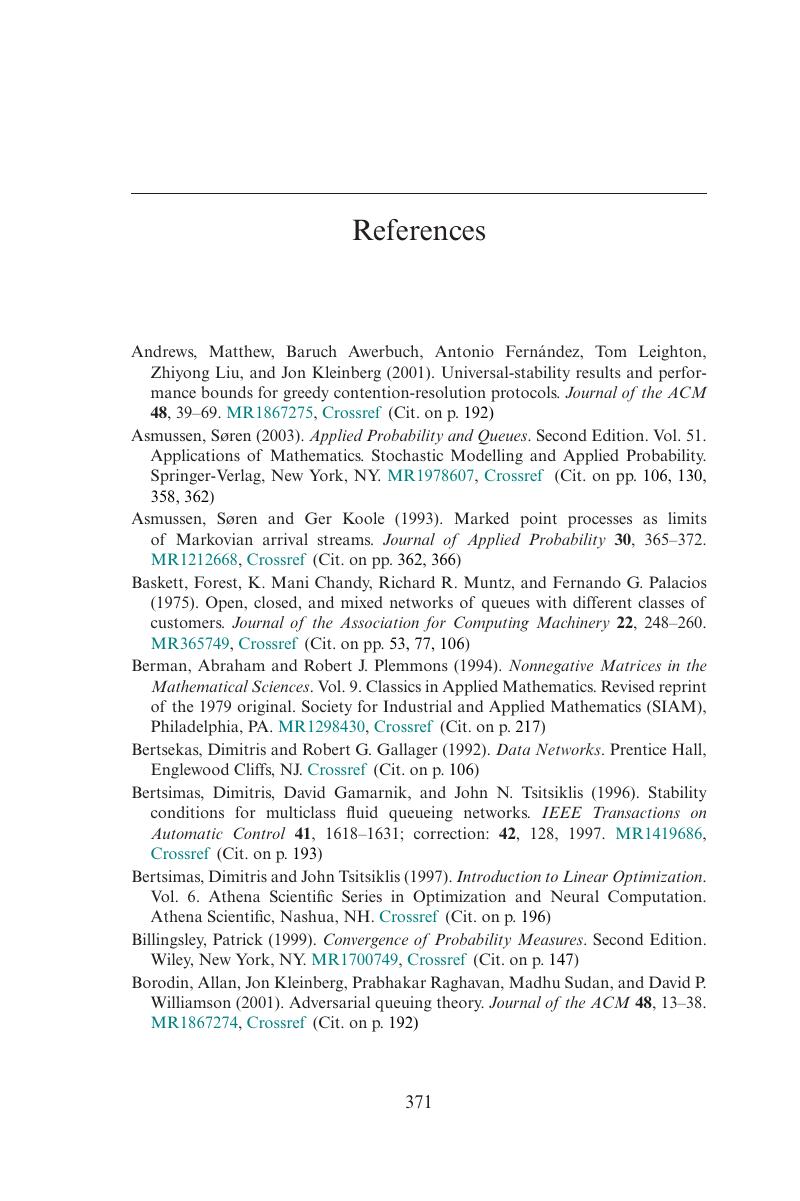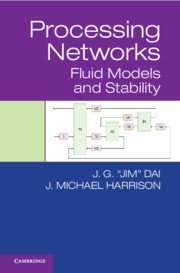Book contents
- Frontmatter
- Dedication
- Contents
- Website
- Preface
- Guide to Notation and Terminology
- 1 Introduction
- 2 Stochastic Processing Networks
- 3 Markov Representations
- 4 Extensions and Complements
- 5 Is Stability Achievable?
- 6 Fluid Limits, Fluid Equations, and Positive Recurrence
- 7 Fluid Equations That Characterize Specific Policies
- 8 Proving Fluid Model Stability Using Lyapunov Functions
- 9 Max-Weight and Back-Pressure Control
- 10 Proportionally Fair Resource Allocation
- 11 Task Allocation in Server Farms
- 12 Multihop Packet Networks
- Appendix A Selected Topics in Real Analysis
- Appendix B Selected Topics in Probability
- Appendix C Discrete-Time Markov Chains
- Appendix D Continuous-Time Markov Chains and Phase-Type Distributions
- Appendix E Markovian Arrival Processes
- Appendix F Convergent Square Matrices
- References
- Index
- References
References
Published online by Cambridge University Press: 17 September 2020
- Frontmatter
- Dedication
- Contents
- Website
- Preface
- Guide to Notation and Terminology
- 1 Introduction
- 2 Stochastic Processing Networks
- 3 Markov Representations
- 4 Extensions and Complements
- 5 Is Stability Achievable?
- 6 Fluid Limits, Fluid Equations, and Positive Recurrence
- 7 Fluid Equations That Characterize Specific Policies
- 8 Proving Fluid Model Stability Using Lyapunov Functions
- 9 Max-Weight and Back-Pressure Control
- 10 Proportionally Fair Resource Allocation
- 11 Task Allocation in Server Farms
- 12 Multihop Packet Networks
- Appendix A Selected Topics in Real Analysis
- Appendix B Selected Topics in Probability
- Appendix C Discrete-Time Markov Chains
- Appendix D Continuous-Time Markov Chains and Phase-Type Distributions
- Appendix E Markovian Arrival Processes
- Appendix F Convergent Square Matrices
- References
- Index
- References
Summary

Information
- Type
- Chapter
- Information
- Processing NetworksFluid Models and Stability, pp. 371 - 378Publisher: Cambridge University PressPrint publication year: 2020
